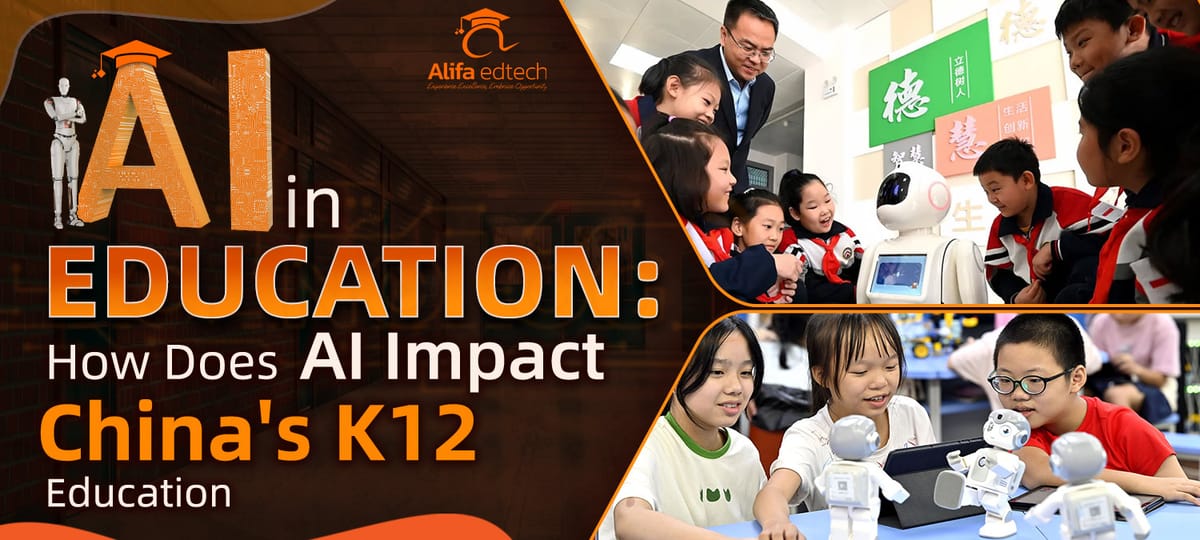China's AI revolution is transforming education worldwide, and it is happening right now. Beijing—China leads this charge in Chinese education. Huai Jinpeng, Qian Minghui, and Wang Lei at the Ministry of Education are making big moves.
Artificial intelligence drives an AI-powered transformation that tailors learning to each student. Globally, AI changes how kids learn by offering personalized paths and smart tools. China stands out because of its bold plans. The education ministry's national development plans focus on education digitalization and digital transformation. This AI-led technological revolution prepares future generations for tech-filled jobs.
What makes China's approach so ambitious in 2025? It combines education with practical steps. For example, new school setups are happening in provinces like Guangdong and Hubei. China Daily often highlights how this strategy builds innovative talent and problem-solving abilities. You might worry about keeping up with these changes. Don't; we will cover tips for your family.
In this article, you will learn about important AI trends in K-12 schools. These include smart classrooms and ethical challenges. You'll learn how AI boosts critical thinking without replacing teachers. Also, how Alifa Edtech helps expat parents in countries such as the Philippines and India. They helps you explore your options, simplify school choices and make enrollment smooth so your child thrives in this new era.
Alifa Education Services bridges ed-tech entrepreneurs and policymakers with China's leading AI companies. Get matched with the perfect technology partner for your region.
Book Your Partnership Consultation Today!
Tell us your needs—we'll find your ideal Chinese AI firm match
China's vision is exciting and strategic, opening doors for everyone. How can you join in? Stay tuned for real examples and advice.
Three Major AI-Driven Transformations in K-12 Education
China's AI revolution is reshaping K-12 education in exciting ways. It uses smart tools to make learning fun. This helps students in places like the Philippines and India. Beijing—China is at the forefront of innovation. It is making changes that enhance education and prepare future generations.

These include three main shifts that are transforming schools. Let's explore them one by one.
Personalized Learning Pathways
Machine learning powers personalized learning in Chinese education. At Shenzhen Mingde Experimental School, AI tools create plans for each student. These plans match their unique needs. They track progress and suggest activities that build advanced thinking and problem-solving abilities. Soon, these tools will change with digital education platforms. This will make lessons more personalized. You'll see greater effectiveness in classroom learning as AI adapts at a rapid pace. How does this help you? It ensures your child gets the right support, like in a smart classroom setup.
Intelligent Teaching Assistance for Educators
At Tsinghua University Primary School, teachers use AI systems. These systems depend on large models for support. They manage teaching plans and Blackboard tasks. This frees up time for deeper thinking and student discussions. Technologies in teaching, like smart campus development, boost the effectiveness of classroom learning. Soon, they will integrate more with online platforms for real-time help. What about your concerns about workload? This setup supports educators, raising the quality of education without overwhelming them.
Want to put your brand in front of families, students, and education-focused readers? We're inviting select partners to advertise with us on our trusted blog.
Want to get featured? Click 'Learn more' and submit a story for us to include.
Immersive Learning Experiences in Schools
AI-powered education brings immersive fun through smart sports equipment and AI-assisted physical activities. Schools use online platforms and laboratory resources for hands-on extracurricular experiences. Shenzhen Mingde Experimental School uses top-notch resources to make digital learning fun. In the future, these will grow with new tech, offering more virtual labs and interactive tools. Do you worry about keeping kids interested? This approach makes learning lively and relevant for all.
The Core of China’s AI Education Revolution
China's AI education revolution is building a complete system. It gets students ready for the future. The government is changing how it develops talent by working with tech partners. This starts in early education. Beijing— China leads with long-term strategies to build innovative talent and practical skills.

These cover five key areas that drive this transformation. Let's break them down.
Government Policy for AI Integration
Talent cultivation models guide China's education policies. The Ministry of Education wants to grow talent at every level. This includes primary schools and vocational training. They promote T-shaped talents who blend broad knowledge with deep skills. Long-term strategies focus on critical thinking and problem-solving abilities. As a parent in the Philippines, you might ask, "How does this help my child?" It leads to creative learning and improved job chances in future fields.
Tech Giants' Role in Educational Innovation
Tech firms collaborate with schools for educational innovation. Companies like those in Shenzhen provide platforms for knowledge creation and talent incubators. This partnership boosts practical abilities through industry links, preparing students for tech-driven careers. In Hong Kong or India, you'll see how this shapes practical skills development. What about access? Inter-school resource sharing makes quality resources available, fostering collaboration between industry and education.
AI Curriculum and Textbook Development
AI textbooks support a rethink of talent cultivation in Chinese education. They emphasize T-shaped talents with vocational training and critical thinking exercises. Students gain problem-solving abilities through interactive content that encourages knowledge creation. For teachers in Myanmar, this means tools for creative learning experiences. How can you use this? It enhances teaching resources, making lessons engaging and relevant to everyday life.
Building Smart Infrastructure in Schools
Schools build smart infrastructure to aid talent development. This includes inter-school resource sharing and quality teaching resources for all education stages. Programs focus on practical skills like hands-on vocational training. In India, you might wonder if it is inclusive. Yes, it seeks innovative talent from many regions. This boosts creative learning. It also prepares for future industries using shared tech tools.
Future Trends for Global Learning
Global educators should watch trends in educational innovation for 2025. Long-term strategies encourage teamwork between industry and schools. This helps build practical skills in T-shaped talents. Tech firms drive knowledge creation and critical thinking for future jobs. As a reader in the Philippines, will this affect you? Talent incubators will share quality resources globally. This will inspire new ideas.
AI Education Revolution Video Showing How Coding Is Outdated and Logical.
Emerging Challenges and Considerations
China's AI push in K-12 education brings challenges, but solutions are in sight. These include ethical and social issues that could impact students and teachers. Beijing – A white paper from the deputy director outlines solutions for a balanced future.
The key challenges facing this technological transformation include:
Ethical Issues in AI Adoption
Ethical training is key in China's AI education. Schools teach ethics education to balance technology with human interaction. Mass data collection raises concerns, so leaders promote digital literacy for students. As a teacher in India, you might ask, "How do we keep AI fair?" Forward-thinking steps involve workshops. They promote critical thinking and help identify digital divides early on.
Data Privacy Risks in Education
Data privacy concerns grow with AI in Chinese schools. They handle mass data collection from students, risking breaches. The deputy director's white paper calls for strong safeguards. In the Philippines, you will wonder about protection for kids. Leaders can improve trust by adding ethics education. They should also conduct regular audits. This will help advance technology while protecting privacy.
Teacher Displacement and Skill Gaps
Teacher displacement worries many as AI takes over tasks. China's system must balance technology and human interaction. This way, it can close gaps in practical skills. The deputy director urges ethical training for educators. From Myanmar, you might think, "Will AI replace us?" Innovative leaders provide digital literacy programs. They help teachers mix AI with their skills. This leads to better classrooms.
Digital Inequality Across Regions
Addressing potential digital divides is urgent in China's education. Rural areas lack access, widening gaps in quality learning. A white paper stresses ethics education to promote fairness. In Hong Kong, you could question, "How do we reach everyone?" Officials want to share resources and promote digital literacy. This helps close gaps so all students can enjoy equal access to technology.
Infrastructural Barriers to AI Integration
Infrastructural barriers make it hard for schools to adopt AI. Outdated technology holds back mass data collection. The deputy director's guidelines focus on overcoming these for smoother integration. From India, you'll ask, "What about weak setups?" Leaders focus on boosting digital literacy and ethics training. This promotes balanced growth, fosters human interaction, and guarantees equal access for all.
China's 2030 Vision and the Future of AI in K-12 Education
China's 2030 AI vision for K-12 education offers thrilling changes for students everywhere. National development plans focus on improving education. They prepare Chinese students for a tech-driven future. In provinces like Guangdong and Hong Kong, innovation hubs are growing fast.

Key strategic directions include:
China's 2030 AI Education Blueprint
National development plans shape China's AI strategy for education. They focus on intelligent education reform starting this upcoming fall semester. In Guizhou and Hubei, schools upgrade disciplines to build strong foundations. As a student in the Philippines, you might ask, "How does this help me?" It creates chances for educational innovation hubs. These hubs prepare students for global jobs. They connect with Chinese tech start-ups like DeepSeek to teach real-world skills.
Building Innovative Talents for the Future
China's plans emphasize building innovative talents through AI reforms. Eastern Zhejiang province leads in upgrading disciplines for practical skills. Chinese students gain from vocational training tied to national goals. In Myanmar, you'll wonder, "What skills will my kids learn?" Programs in Hong Kong and Guangdong boost critical thinking through DeepSeek partnerships. This helps grads succeed in tech with practical experience.
AI Integration in K-12 Curriculum Reforms
AI integration upgrades K-12 curricula across China this upcoming fall semester. National development plans push intelligent education reform in provinces like Guizhou. They blend tech into daily lessons for better learning. From India, you could think, "Will this fit our schools?" Yes, it provides chances through innovation hubs. These hubs help Chinese students learn skills using DeepSeek tools. This gives them a competitive edge.
Boosting Global Competitiveness through Skills
China's vision boosts global competitiveness by upgrading disciplines in AI education. Guangdong and Hubei provinces focus on practical skills via national development plans. Chinese students prepare for future jobs through intelligent reforms. In Hong Kong, you might question, "How does this beat other countries?" It uses innovation hubs and DeepSeek partnerships. This sharpens skills for tech startups and global markets.
Long-Term Trends in AI Learning Environments
Long-term trends in AI environments stem from China's 2030 blueprint. This fall semester, Eastern Zhejiang and Hong Kong will expand intelligent education reform. National plans create opportunities in innovation hubs for Chinese students. From the Philippines, you'll ask, "What trends matter most?" Integrations such as DeepSeek improve disciplines and build skills for tech roles worldwide. They also promote sustainable growth.
Conclusion
China's AI journey in education offers smart lessons for everyone. Teachers and leaders can use these ideas. They can create fair and creative systems. These will help prepare kids for the future. National goals show how to balance tech with ethics for a better world.
Key takeaways emerge from this model. Start with responsible innovation. This helps ensure educational equity. All students deserve equal chances. In India, preparing future-ready learners means teaching lasting skills. This aligns with national goals for sustainable change.
Global educational leadership demands ethical steps too. Why act now? It builds trust and keeps tech human-centered. Countries such as the Philippines and Myanmar can link policies to local needs. This helps create better strategic alignment. Educators and policymakers, take action! Start with small efforts, try new ideas, and watch your communities grow.
Alifa Edtech helps expatriate parents navigate China’s education system. We make school selection easy. Your child will find the best fit in international or Chinese schools. Book a free consultation today!
Related Articles












Member comments